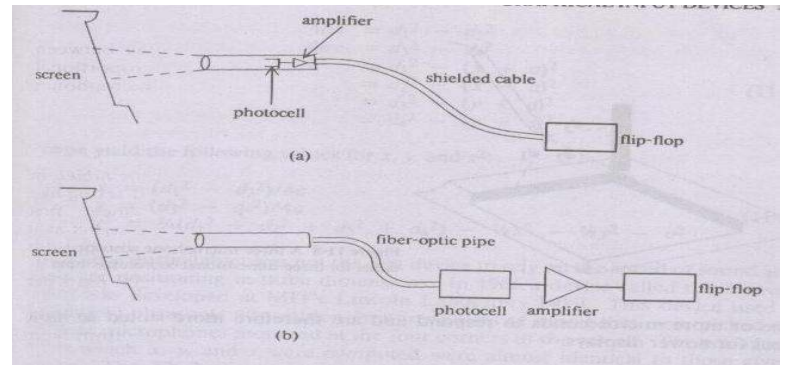We know that every pixel on the screen that is a part of the picture emits light. In fact they are much brighter than their surrounding pixels. All that the light pen does is to make use of this light signal to indicate the position. A small aperture is held against the portion of the picture to be modified and the light from the pixels, after passing through the operator falls on a photocell. This photocell converts the light signal received from the screen to an electrical pulse – a signal sent to the computer. Since the electrical signal is rather weak, an amplifier amplifies it before being sent to the computer. Since a “tracking software” keeps track of the position of the light pen always (in a manner much similar to the position of the mouse being kept track of by the software), a signal received by the light pen at any point indicates that portion of the picture that needs to be modified (most often that portion gets erased, paving way for any other modifications to be made)

However, when the pen is being moved to it’s position – where the modification is required – it will encounter so many other light sources on the way and these should not trigger the computer. So the operator of the light pen is normally kept closed and when the final position is reached, then it can be opened by a switch – in a manner similar to the one used in a photographic camera, though, of course, the period of opening the operator is for much longer periods than in a camera.
